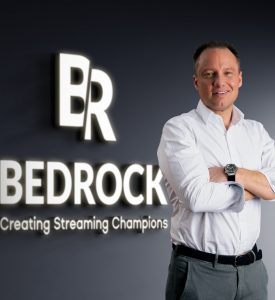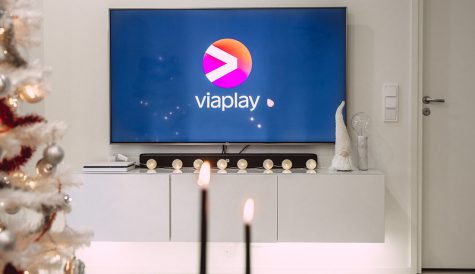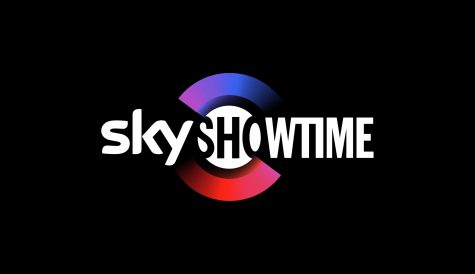Hybridity: a smart move for streaming players
Jonas Engwall, CEO of Bedrock, talks about the future of streaming and shares his thoughts on hybridity.
 The last decade saw a massive increase in online video adoption and the Covid-19 crisis acted as a proper catalyst for this trend. Individuals found themselves spending more time at home, with fewer options for entertainment than ever before. This was an unprecedented opportunity for streaming players to grow their audience and their efforts were mostly focussed on offering their users more content and better quality and experience to keep them engaged.
The last decade saw a massive increase in online video adoption and the Covid-19 crisis acted as a proper catalyst for this trend. Individuals found themselves spending more time at home, with fewer options for entertainment than ever before. This was an unprecedented opportunity for streaming players to grow their audience and their efforts were mostly focussed on offering their users more content and better quality and experience to keep them engaged.
However, last year marked a new chapter of the streaming market as video streaming providers around the globe faced a slower growth of VOD consumption. The competition had become fiercer than ever and consumers have been drowning in an ocean of content, having subscribed to multiple platforms without really knowing what to watch.
Today, to keep up the pace, streaming players have to rethink their strategy including their revenue, content and distribution models. Most of them have already started transitioning to a hybrid monetisation approach with a quarter (25%*) planning to go for a combination of AVOD and SVOD. There’s no doubt that hybridity is the future of streaming, but how and why should this move be made?
Diversifying the sources of revenues
As the streaming war heats up, it is becoming increasingly difficult for providers to rely on a single monetisation model and maintain their revenue model. Jonas Engwall, CEO of Bedrock goes through the limits of AVOD, SVOD and TVOD and EST, and presents and why going for a hybrid model makes more sense today:
The AVOD model offers viewers access to original content or live content for free, or for a reduced membership rate. But the limits are found when not managing to maintain sufficient audience growth, to satisfy the increasing appetite of advertisers for targeted audiences.
With SVOD, there will always be viewers that unsubscribe and it takes significant marketing efforts to continually add more subscribers. As for TVOD and EST players, they have no guarantee of future revenue with the one-time transactions.
To overcome these limits, actors in the market are turning to a hybrid model so they can combine two or more monetisation models. This way, they have the means to address various audiences’ expectations, increase their reach and, therefore, their conversion capacity.
By doing so, players can launch competitive offers leveraging AVOD, commercial animations – such as promotions and discount – bundles or multiple subscription plans.
This diversification means that consumers will increasingly be able to choose when to consume content with ads, or to avoid the ads by paying. Advertisers will be able to touch only those people who are interested in watching your ads, and ROI will be easier to measure. For example, viewers are more willing to watch ads on streaming, because ads are more relevant; advertisers can be more confident that their ads were viewed, and, ultimately, they are able to engage more effectively with consumers. Streaming is a win-win-win. It makes more sense for users, advertisers, and broadcasters.
Going forward, we are likely to see a fracture between players who have diversified revenue streams successfully and profitably, and those that have not. Collaborating with a partner who understands what’s at stake and has an extensive knowledge in streaming commercial offers is key to future proof a streaming platform.
Pushing the right content and offer to the right user, when they need it…
To optimise their chances of getting attention from people and having a positive impact on them, streaming players have to diversify their content and the way it can be accessed.
From premium to original content, live streaming, replay and bonuses expectations vary from one audience segment to another. For example, sports enthusiasts much prefer watching live sporting events rather than recorded ones. Indeed, if anything happened during a game, they probably already know it because it’s been in the press or someone told them (even by accident).
These last few years, streaming giants have made available more content than ever, investing in original content so it’s absolutely tailored to their users’ expectations. But if they keep adding content, how their platform isn’t going to be a mess, a mix of anything and everything, to their audience’s eyes?
At Bedrock, we leverage new technologies such as AI to create a tailored user experience. Based on data related to the user’s demographics and consumption, streaming platforms can be relatively different: suggestions, videos’ thumbnails, colours…. It all can be personalised to remain relevant to each segment and offer. Engagement and retention are intricately linked, so offering a seamless and personalised streaming experience is a good way to demonstrate your ability to meet their expectations while putting performance at the top of your priority list.
…and where they need it
Consumers today are looking for convenience and, as mentioned above, they do not consume content the same way, depending on the segment they belong to. Some like watching the latest episode of the series that everyone is talking about on their phone while commuting, so they can talk about it with their colleagues once at work. Others might prefer watching live a mouth-watering cooking show on TV, at home, with their friends.
There are different moments, different ways of consuming and different use cases. It is logical for people to spend more time with big screens, as the viewing experience is better, thanks to (now standard) technologies such as 4K, HDR, or Dolby atmos. That’s why we currently see the race around big screens intensifying with multiple businesses, including Amazon, Apple, Google, Sky, investing.
In any case, viewers want to be able to access a wide range of different video offerings from any device they want. Therefore, content providers should work with a partner who can make their service available on multi-devices. This will not only help keep their customers satisfied but also allow providers to collect and analyse video consumption habits. Using the data that has been collected, content providers can adjust their content and ad strategy to ensure it is relevant for viewers.
Bedrock, like other large platforms, is putting a lot of effort into CTV and OTT developments because this is where we see a lot of interest at the moment. But we know that mobile is just as important so we keep our standards high to deliver a smooth experience across all devices.
Overall, the more you know about your viewers’ habits and profiles, the better you can retain and improve your commercial strategy. At Bedrock, we know how crucial it is to leverage this knowledge the best you can. This is why we use technologies such as AI to give a better view into segments’ specificities and automate upsell mechanisms. From ‘comfort’ features, such as a no-ads option and better video quality, to download-to-go and locked content, upsell propositions can then be tailored to each segment.
To an extent, hybridity in all its forms can be a way to address the ‘subscription fatigue’ we’ve heard so much about lately. Making sure that viewers can watch what they want, when they want and where they want is key to retaining its viewership and attracting new segments.
In a nutshell, people’s budget for streaming services is not infinitely extensible and there’s already a plethora of offers on the market. So streaming players need to think ‘hybridity’ and work on commercial propositions that’ll meet their viewers’ expectations while opening a door to new opportunities.
*source: The State of OTT Revenues 2021, Applicaster
This is sponsored content.



